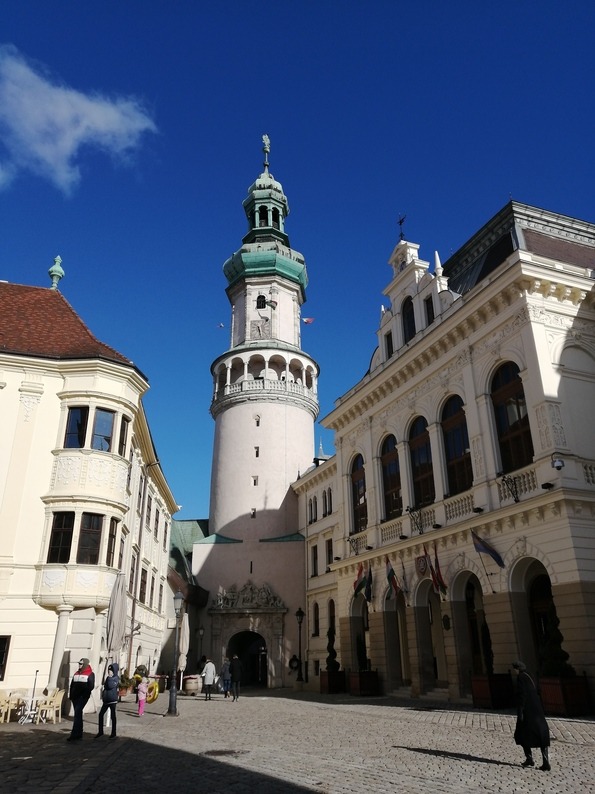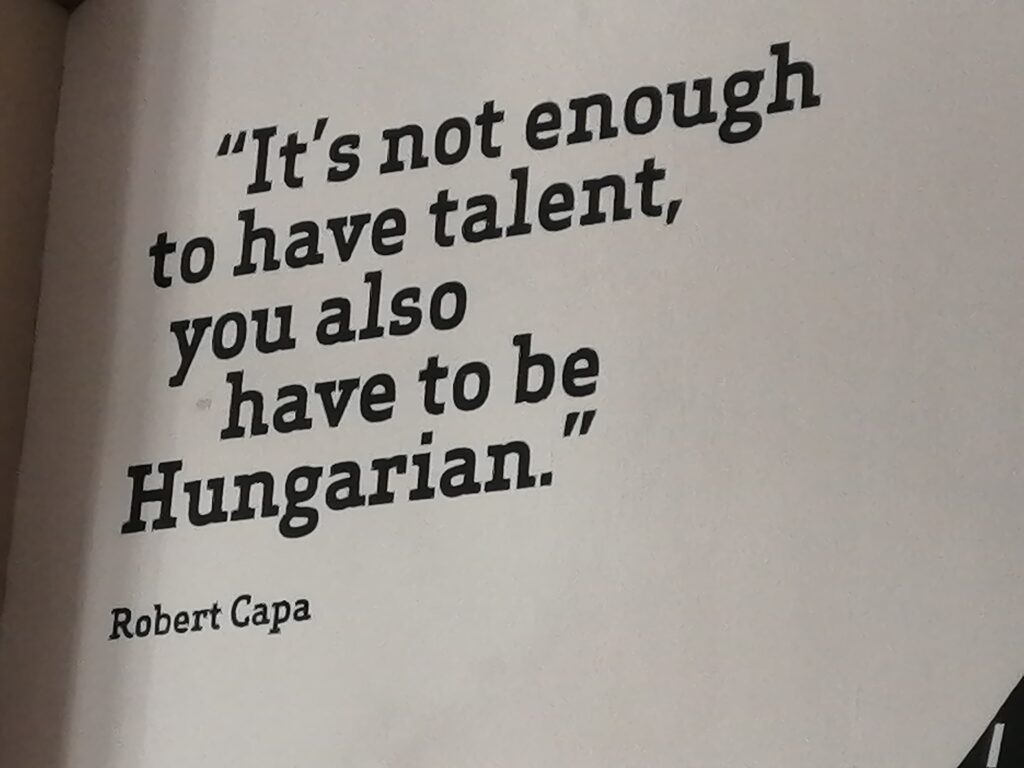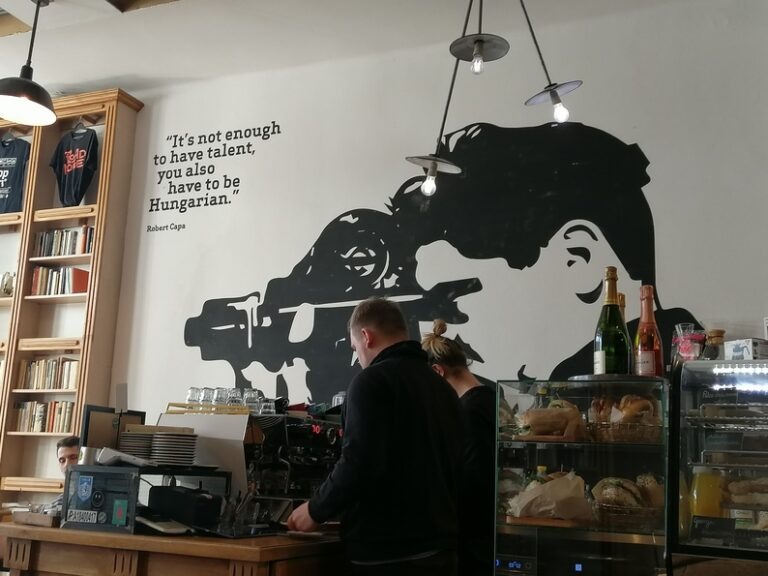In these uncertain times – Be More Hungarian! A taste of some serious national self-confidence in Sopron, Hungary.
—–
“Have fun with our wild neighbours!”
That’s the SMS I received from my Slovakian friend when I told her on Sunday that we were spending the day in Sopron, Hungary.
S. and I have known each other for north of 15 years now, during which small era she has mentioned multiple times that Slovakians and Hungarians are not the best of buddies. Mainly due to vast swathes of what used to be Hungary being awarded to (Czecho)Slovakia after World War I. Hungarians think Slovakians stole their stuff. Therefore, I am told, neighbourly relations can still be ever so slightly rocky.
Therefore, S. concludes, it is nothing short of a wonder that one of her best friends is Hungarian.
A law unto themselves
Even with Britain having vexed historical relationships with more countries than you can shake an imperial stick at, I don’t feel at all qualified to comment on this particular vexed historical relationship. But I can tell you from my own experiences and observations that Hungarians are an unusual lot. After 18 years in Central Europe, I just don’t feel like I’ve got familiar with them in the same way that I have with the Czechs and the Slovaks. They are quite inscrutable.
I’ll be honest: Hungarians just don’t come across as cuddly in the same way that their Slavic neighbours do. Which isn’t to say they aren’t friendly or hospitable. They absolutely are. But there’s definitely an “edge” to them. Something a little bit temperamental and brooding that I can’t quite put my finger on. Maybe that’s what S. meant when she called them “our wild neighbours”?
They are who they are
I mean, just look at their language. Slavic tongues are similar enough to each other that when you cross the border from, say, the Czech Republic into Poland, a lot of words are similar enough that you can get around.
For example, “apple” is “jablko” in Czech and Slovak, “jabłko” in Polish and “yabluko” in Ukrainian. You see? All quite brotherly. Not so with Hungarian. It is NOTHING like anything else in the vicinity. Or even anything else for thousands of miles around. “Apple” in Hungarian is “alma”. Where did that come from?
Hungarian might sound nice and singalong, but it is impenetrable, and no other European language is going to help you with it. Apart from maybe Finnish, and even that is pretty tenuous and controversial.
The overall vibe I’m getting is: “We are here, we are the Hungarians, we are who we are and talk how we talk and we are not going to take lectures off ANYBODY”.
So there.
Over the border to Sopron, Hungary
So it’s with a slight whiff of trepidation that I crossed the border into Hungary last Sunday to visit Sopron.
I’ve been to Sopron several times before. It’s a quaint place: small and easy to walk around. There are some interesting sights and a number inviting cafés and restaurants. In short: it’s excellent daytrip territory. On any given weekend, you’ll see plenty of Austrians walking around for precisely that reason.

A quick gallop through Sopron’s colourful history
When this area was part of the Roman Empire, a settlement called Scarbantia stood here. It was located on one of Europe’s most important amber trade routes which stretched from the Baltic through to the Adriatic. The forum of this Roman settlement was more or less exactly where the main square is today.
During the migration period, the place was thought to be deserted. The Hungarians, migrating westwards, moved in, reinforcing the old Roman city walls and building a castle. By the 11th century, Sopron had regained enough prosperity to be recorded as an important city. Through the Ottoman occupation of Hungary and until the dissolution of the Austro-Hungarian Empire in 1918, it remained part of the Habsburg-ruled Kingdom of Hungary.
By that time, the city was bilingual with inhabitants habitually using both the German and the Hungarian names for it. Ödenburg in German, Sopron in Hungarian. When the Austro-Hungarian Empire collapsed in 1918, the predominantly German-speaking Sopron was initially awarded to the new Republic of Austria in the Treaty of Saint Germain.
However, this triggered unrest among Western Hungarians who were unhappy with their own settlement under the Treaty of Trianon. A local referendum was called to decide the town’s fate along with that of the 8 small settlements surrounding it. 65% of those who voted chose to become part of Hungary.
Ödenburg or Sopron? A post-empire tug-of-war
The result of this referendum remained contentious, with Austrians refusing to give up hope that Sopron would eventually be returned to them and become the administrative capital of the newly formed federal province of Burgenland. In the end, that job ended up being handed to the rather underwhelming Eisenstadt in 1925, although the provincial constitution has never specified it to be so. Hope, it would seem, really does die last.
Due to its location in the far west corner of Hungary, Sopron found itself stranded “at the end of the world” during the Communist period when the Iron Curtain was just a hop, step and a jump away. It was therefore fitting that the Pan-European Picnic took place close to Sopron in August 1989 — a key event in the massive geopolitical shifts of that momentous period.
After the Iron Curtain fell, economic ties with Austria were rebuilt and the area flourished once more. Ties which have only strengthened with Hungary’s accession to the EU and the passport-free Schengen zone.
But back to our daytrip!
After a stroll around the town centre, taking time out to admire the old city walls and realising the Old Synagogue we wanted to visit was closed — we headed over to a café to warm up with a good cup of coffee.
Kultúrpresszó on Sopron’s main drag (called Várkerület — pronounce that properly if you can) is an achingly trendy place run by achingly trendy young people and serving some excellent coffee blends imported from Brazil. We order a flat white and a latte macchiato and settle down to read the specialist coffee magazines they have lying around on the achingly trendy retro furniture.
The wall displays a large mural in silhouette form: a cameraman (Robert Capa) making a film. And right there, in the accompanying quote, is that quintessential Hungarian vibe:

What confidence. It is impressive. These are clearly people who believe in themselves and that they have something important to contribute to the world at large.
Perhaps because history has repeatedly proven them right! After all, Hungary has brought forth such personalities as Harry Houdini (born Erich Weisz in Budapest in 1874) and — indirectly — Nicolas Sarkozy, France’s über-confident ex-president, whose father was a Hungarian aristocrat. And that’s even before we get to Tony Curtis (whose parents were Hungarian), László Bíró of pen fame and József Pulitzer who is so famous, he needs no further introduction.
There’s no doubt about it, those Magyars have gone forth and changed the world!
BMH — Be More Hungarian
Sitting there, sipping my flat white along with the Sopron hipsters, I decide that we all need to take a leaf out the Hungarians’ book every now and then. They might come across as a bit scary, but with this level of national self-belief, “Be More Hungarian” seems like a pretty sound piece of advice for anyone.
Got a goal but feel overwhelmed and like you’re not capable of achieving it? Be More Hungarian!
Feel like someone is taking advantage of you and you’ve had enough? Be More Hungarian and draw the line!
Got a sales pitch to a new client coming up and suffering from terrible nerves? Summon your inner Hungarian! You’ll be in fine, ass-kicking fettle in just a jiffy!
Cheers to that! Egészségedre!
—–
Related articles:
The strange story of the 2-day Republic of Heinzenland
Lednice castle: what does a faux minaret have to do with a pencil?
The Thayatal National Park – a magical autumn hike through European history
18 years living in Vienna – thoughts on a very special anniversary
—–
Photos: author’s own
